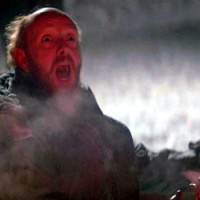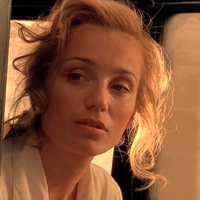Cuba Gooding, Jr., Laurence Fishburne, Ice Cube, Morris Chestnut, Nia Long, Angela Bassett
Written and Directed by John Singleton
“How to survive in South Central,
A place where bustin a cap is fundamental..”
– How To Survive in South Central, by Ice Cube
It is often forgotten that the first African-American director nominated for an Academy Award was not Spike Lee, but John Singleton, all of 24 years’ old when his message-laden, South Central Los Angeles-set ballad of three black youths all gravitating towards different extremes premiered at Cannes in 1991, immediately placed in the festival’s Un Certain Regard category.
The film, entirely set in Singleton’s home of South Central Los Angeles – the “Hood” of the title – begins in the mid-80s, where young Tré Styles lives with his mother, Reva (Angela Bassett). Following a roughhousing incident at school, Reva reluctantly and tearfully sends Tré to his father’s in the neighborhood of Crenshaw, knowing full well that his hard-nosed father will be the best thing for the young, bad-tempered boy.
Laurence Fishburne plays Mr. Furious Styles, the mindful, strong-willed and wise father of Tré and the voice of Singleton himself, whose most important messages come from the deep, conscionable baritone of Fishburne. He is a rarity in the Hood of the film’s title, a single father in a neighborhood of single mothers with multiple children from different, A.W.O.L. fathers, and he knows this. His method of raising Tré is rigidly strong and unforgiving, with a network of chores and rules. But his love is equally as strong, and his manner and mode stresses the film’s early theme that the tough love only a boy’s father can give will lead him to making good decisions while his friends around him fall victim to the Hood’s violence and stifling temptations.
His best friends Doughboy and Ricky, half-brothers, are archetypes of the only routes a life in the Hood offers. Doughboy, overweight and lazy, is scolded and berated by his mother constantly, while she looks with a gleaming and supportive eye to Ricky, who hopes to play football when he gets older.
But outside of the home and on the street, Doughboy is smart, already knowing that the blood-stained alleys and weed-choked abandoned tracks of the Hood is a road you can’t tread without constantly looking over your shoulder. Ricky, however, is naïve in his blind trust. When an older gangbanger asks for Ricky’s football, promising to give it back, Ricky gives it to him at the ignorance of Doughboy’s warnings, and it’s promptly stolen. Despite being outmatched and outnumbered, Doughboy demands the ball back. He is promptly beaten, and tells everyone angrily that he’s going to the store, even though he has no money. Later that day, following a trip to the beach by Tré with his father, Doughboy is seen leaving his house in handcuffs, destined for a stint in juvenile detention for shoplifting.
Seven years later Tré, now a senior in high school, goes to a “Welcome Home” party for Doughboy, who has just finished what we’re led to believe is the most recent in a series of stints in prison. Ricky, a star running back at Crenshaw High, is a teenage father whose young son and girlfriend live with him at his mothers, while Doughboy and his cadre of no-hopers spend most of every day hanging around on the porch, drinking Olde English and occasionally making drug deals.
The coming-of-age tale is deepened by discussions of gentrification, sexual responsibility and teen pregnancy, dealt with in realistic conversations between Tré and Furious, as well as through brief montages showing quickly how each friend is progressing, or in Doughboy’s case degressing, as a boy in the hood.
Tré, a good student who has stayed out of trouble in the last seven years, is eager to leave Crenshaw for something better. He is equally eager to spend his life with his young girlfriend Brandi (Nia Long), who despite earning his frustrated ire at her Catholic school scruples, knows when he is trying to be tough – it’s hard not to in the claustrophobic clime of the Hood when morals mean weakness – and when he is genuine. Ricky, scholarship material for local universities such as USC, needs only to get above 700 on his S.A.Ts and he is in good standing for a free ride as a Trojan.
Doughboy, nihilistic, callous and eager to show off how hard he is, makes a thoughtless decision – one perpetrated by any young man with a gun looking to show his grit – at a nighttime street race with Ricky and Tré, the result of which will lead to the film’s inevitable heartbreaking climax, a reminder that a coming-of-age tale in the Hood is no fairytale. Boyz’s powerful conclusion –encased in a twenty-minute shell of grief, retribution, responsibility and sacrifice – is steeped in the powerful points that Singleton strives to make throughout the film. These include reinforcements of South Central Los Angeles’ chronic hopelessness (“One out of every twenty-one African Americans will be murdered in their lifetime,” Singleton displays in bold before the film’s opening titles), but also important and incredible timely wisdom (“Any fool with a dick can make a baby, but only a real man can be a father to his children,” Furious tells Tré).
Heading the cast with incredible depth is Cuba Gooding, Jr., who plays Tré, a young man forced to grow up much too fast in his volatile neighborhood and struggling to keep his sanity amongst the unthinkable. Morris Chestnut plays Ricky with sweetness and a chivalric attribute rare in his environment – and unable to last long in.
But the true star of the film in both performance and cultural significance is O’Shea Jackson, known better by his stage name of Ice Cube. His performance in the role of Doughboy is iconic, and his rap-star credence helps to add an incredibly raw look and feel to his character. He is the high school drop-out, born in a broken home and in and out of prison. He is the product of his environment, the standard of how willful and accidental government ignorance at that time led to the destitution of the African-American male in the poorly policed L.A. cesspools of aggression and brutality. Doughboy’s presence in this seemingly endless cycle of drugs, booze, destroy-ourselves-from-within and violence-begetting-violence isn’t a choice for him; it’s life, the only world he knows.
Following the film’s climax, a degenerating spiral so obviously destined for heartbreak its suspense forms a claustrophobic, gut-wrenching nightmare, Doughboy and his pals go out looking for vengeance against a group of hoods.
Almost giving up the search, Doughboy spots them eating burgers after committing a horrific senseless act of violence. They sneak up on them and deliver retribution as only the streets can afford. The semi-satisfying vengeance and earned reprisal is depressing in how it doesn’t heal the aching wound of the film’s climax, but only serves to reinforce the film’s main pleas.
In this, Singleton achieves what countless screenwriters and directors have failed to achieve using the medium of film as their labor of love – relaying a real message.
In October of 1990 Singleton gathered the funds, prepped his script and started working on Boyz N The Hood, just five months after his graduation from the USC School of Cinematic Arts. To ensure maximum realism he filmed its entirety in South Central neighborhoods – helping to raise awareness for film in the area by starting the South Central Cinema company – and also hired several gang members as consultants to give his film a credible and current look and feel, taking their advice on street dialogue and wardrobe to the extreme. The majority of his extras were also real-life residents of the most violent areas of South Central, communities like Compton, Watts and Inglewood.
Following its triumphant debut – Singleton’s first as director – on the worldwide cinema scene and its Cannes citation, Boyz n the Hood went to the 64th Academy Awards with nominations for Singleton in both Best Director and Best Original Screenplay – where he lost to The Silence of the Lambs and Callie Khouri’s script for Thelma & Louise, respectively. The film has gone on to become a cultural landmark, deemed significant enough for the Library of Congress to preserve it in the National Film Registry in 2002. It’s tackling of real-world problems in a place many white Americans wouldn’t be familiar with until the Rodney King verdict and subsequent riots was unprecedented, as were its many ideas posed to the very community it depicted.
“My main message is that African-American men have to take more responsibility for raising their children, especially their boys,” Singleton later said of the theme he worked heaviest on. “Fathers have to teach their boys to be men.”
This message, as well as others, works well for a variety of reasons, most of all Singleton’s development of meaningful, diverse and authentic characters, which bring the audience into the real scope of their suffering, their raw drama.
Even Doughboy, so often serving as the lost-cause, no-hope warning aspect of the film, has some important words.
“Did ya’ll get ‘em?” Tré asks Doughboy the morning after the night’s terrible events. Doughboy gives him a look, to which Tré looks away from, down at his shoes.
“I don’t know how I feel about it either, man,” Doughboy explains suddenly on his own. “Shit just goes on and on, y’know?”
Doughboy knows that he’s punched his clock in, that for all intents and purposes he’s sealed his fate, he’s accepted that it’s a life he’s lived and that he’s perpetrated and there isn’t any going back. But for Tré, Doughboy knows there’s a lot more, and doesn’t want to see him get stuck in the same chokehold – the proverbial bird with the scarlet, rippling colors getting its feathers ruffled in a cage.
Doughboy walks away from the curb and in a trick of film slowly fades away, while Singleton explains in bold that he is murdered two weeks after the incident of the film’s conclusion. Tré, standing at the porch, seems to look around anxiously for a second, trying to find out where Doughboy went. Where his friends went. Where his youth went.
This subtlety is heartbreaking, powerful, and unabashedly thematic. Like the film itself.
Images courtesy of 1001plus.blogspot.com and flixster.com, respectively.











You must be logged in to post a comment.